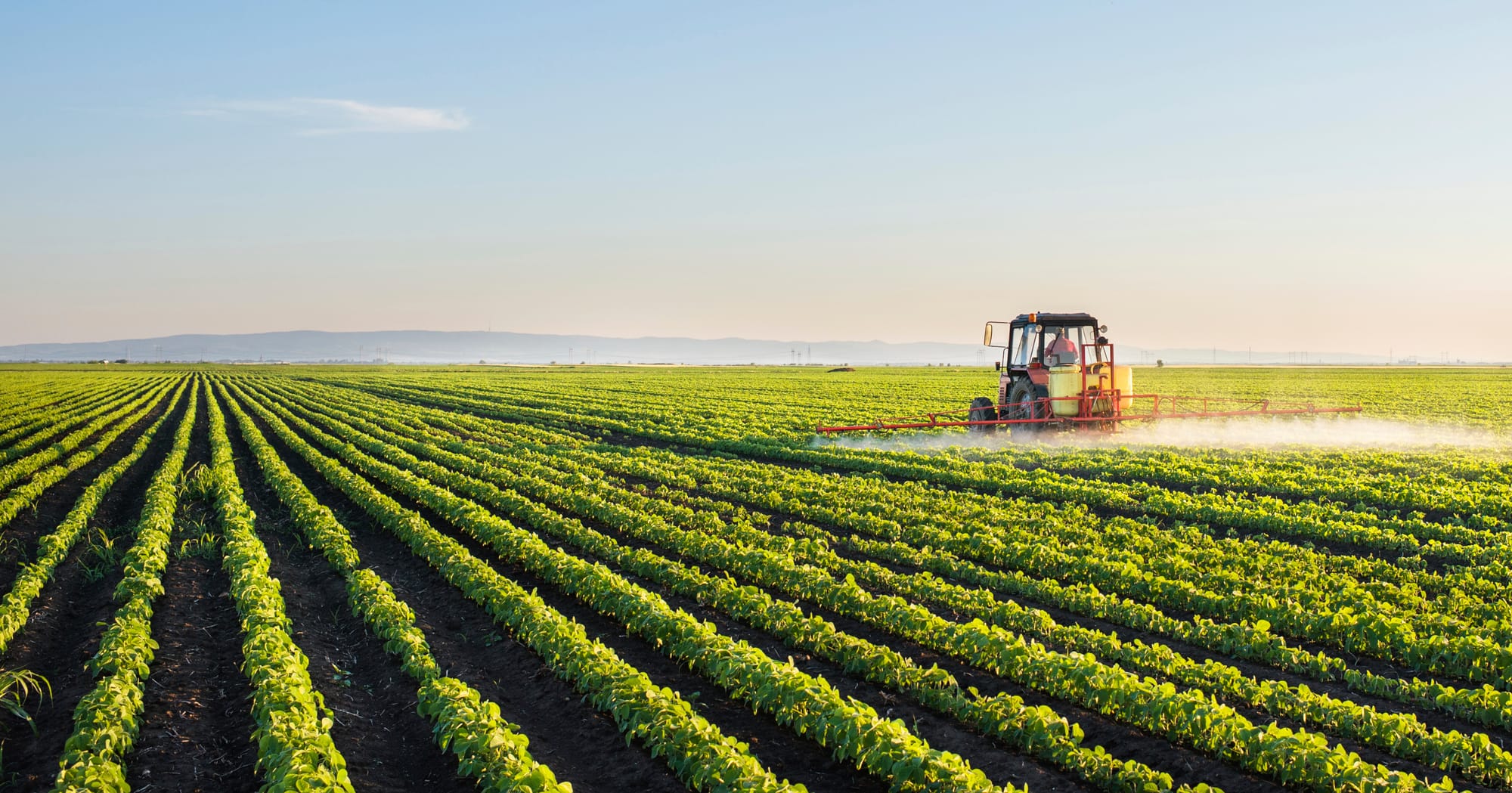Update 5: Graeme Sait’s European Adventure: Spreading the Power of Nutrition Farming®
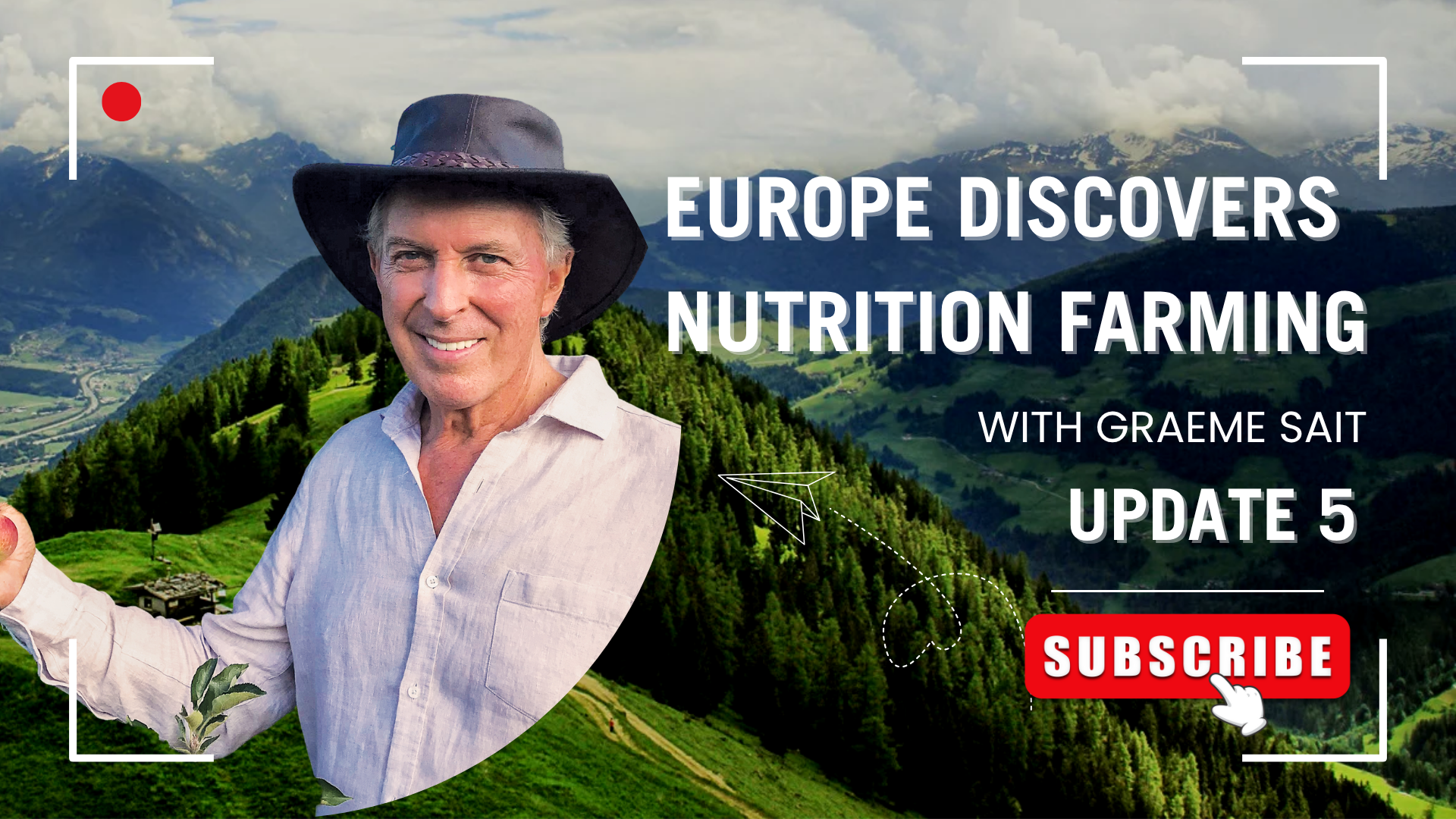
Hi Everyone,
Welcome back to the sharing of our European seminar tour. The past ten days involved visits to Germany and Austria, where we met some fascinating farmers and consultants and also spent some precious time with Claudia’s family.
Upon arrival in Berlin, we collected our Renault SUV and travelled to our accommodation in Potsdam. Our next three days were to be spent in a gracious villa with expansive views, in a park-like suburb, just 100 meters from the famous Sanssouci Palace.

The breakfasts in the hotel were delicious, and we were able to subscribe to my defensive eating plan, where we try to make every plate a rainbow. This practice relates to the fact that plant pigments (colours) are protective tools for the plant, and it is no accident that they are among the most powerful antioxidants for us. Each colour has a different effect. They might be fat-soluble (i.e. Vitamin E) for the heart and brain, or water-soluble (i.e. Vitamin C) for distribution via our circulatory system. It can be a really productive wellness strategy to paint the plate in as many colours as possible whenever we eat. These breakfasts were our first chance to create that palette.

In fact, we felt so good after breakfast that we decided it was time for some long exploratory walks. That was when we literally stumbled across the famous palace at the end of our street. Oh my goodness, if you are ever in this region, it is truly something to behold.
This was the summer house for the Prussian King, Frederick the Great, constructed in 1740. The translation means “carefree”, and it was intended to be more about comfort than grandeur—a retreat from the pomp and ceremony of the main residence and court. A second serious skite show called “the New Palace” was later built in another corner of the massive formal parklands, but was rarely used.
The Rococo-designed palace is positioned on a terraced hillside above expansive gardens, parks, fountains, and forested areas. The King must have had a serious love of figs and wine. The paved terrace walls are covered in trellised grape vines, selected from the finest wine grape varieties found in France, Italy, and Portugal. 168 mini-greenhouses, positioned between the vines, contain 500 pruned fig trees.


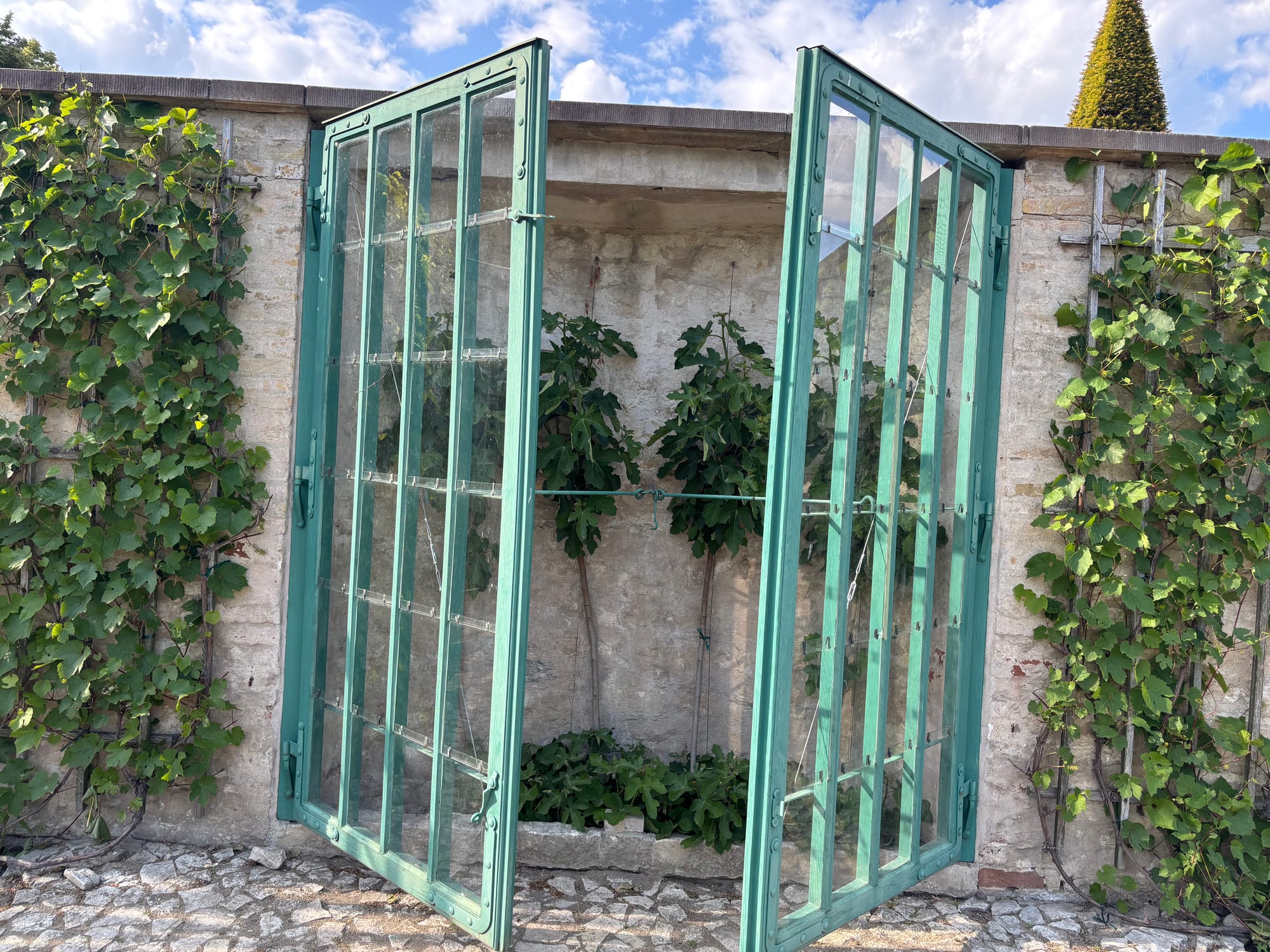
A fountain surrounded by marble statues graces a large pond at the base of these terraces. In fact, these evocative masterworks, created by leading sculptors of the time, can be found in all the hidden corners of the vast gardens. Frederick wanted a landscape designed to reflect the fusion of nature and human ingenuity, and he achieved his goal here. Nature delivers everywhere, with swans and exotic ducks sailing down fish-filled waterways, reflecting majestic trees that have watched over this wonderland for several centuries. We had just a couple of hours to explore, but we could have easily spent a day amidst this heritage-listed landscape. We never even got to experience the sumptuous playhouse of the King, but the photos looked spectacular, and we vowed to return to Sanssouci Palace on our next visit.

This was one of the few areas in Europe where the weeds were more manicured, but even here, the wilding was apparent. The meadows that are part of this parkland expanse were left to nature’s management. In Australia, the councils are amongst the biggest users of glyphosate, in the strange belief that the lush green roadside greenery looks better brown and dead. In Europe, they have rightfully been appalled at the findings of a German study from 2021. This 27-year research project looked at the plight of flying insects and reported a 75% decline within that short period. That study has since been replicated in several other regions, including the Amazon. Insects are the basis of the food web that sustains life. We are all aware of Colony Collapse Disease (CCD), which is so seriously impacting honey bee populations across the globe, but all insects are precious. The Europeans have made changes to support struggling insects, and part of that relates to the rewilding of everywhere that were otherwise brush-cut and herbicided. Wildflowers (weeds) now adorn every roadside and parkland area to provide habitat for the bruised and battered insect life. It takes a little getting used to if you are conditioned to the neat and tidy. However, after travelling through several countries, I’m slowly reframing “neglect” as “nurturing”. Perhaps my thousands of hours on a brush cutter can now be repurposed into something more constructive. I like the idea of construction vs. destruction!
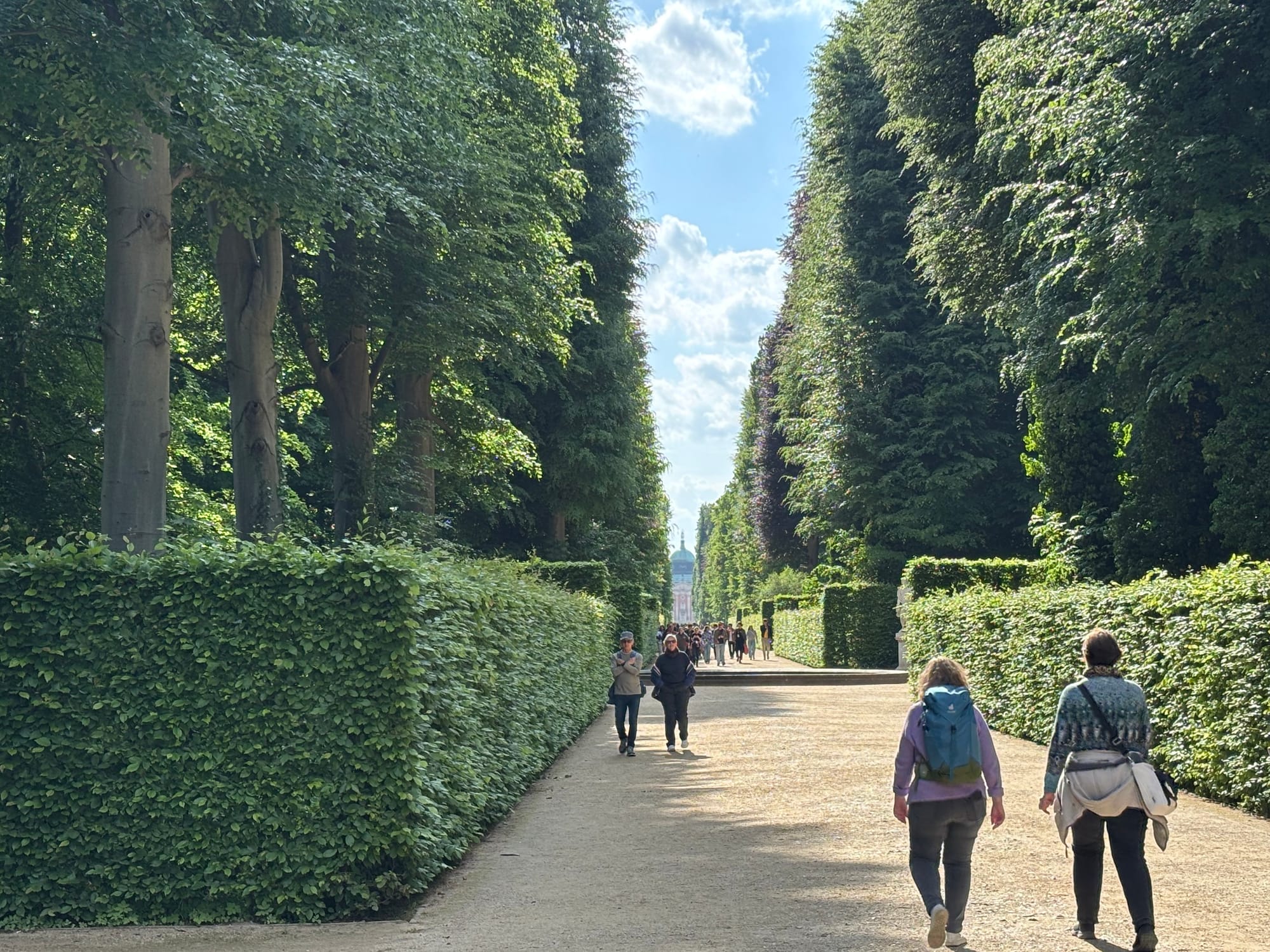
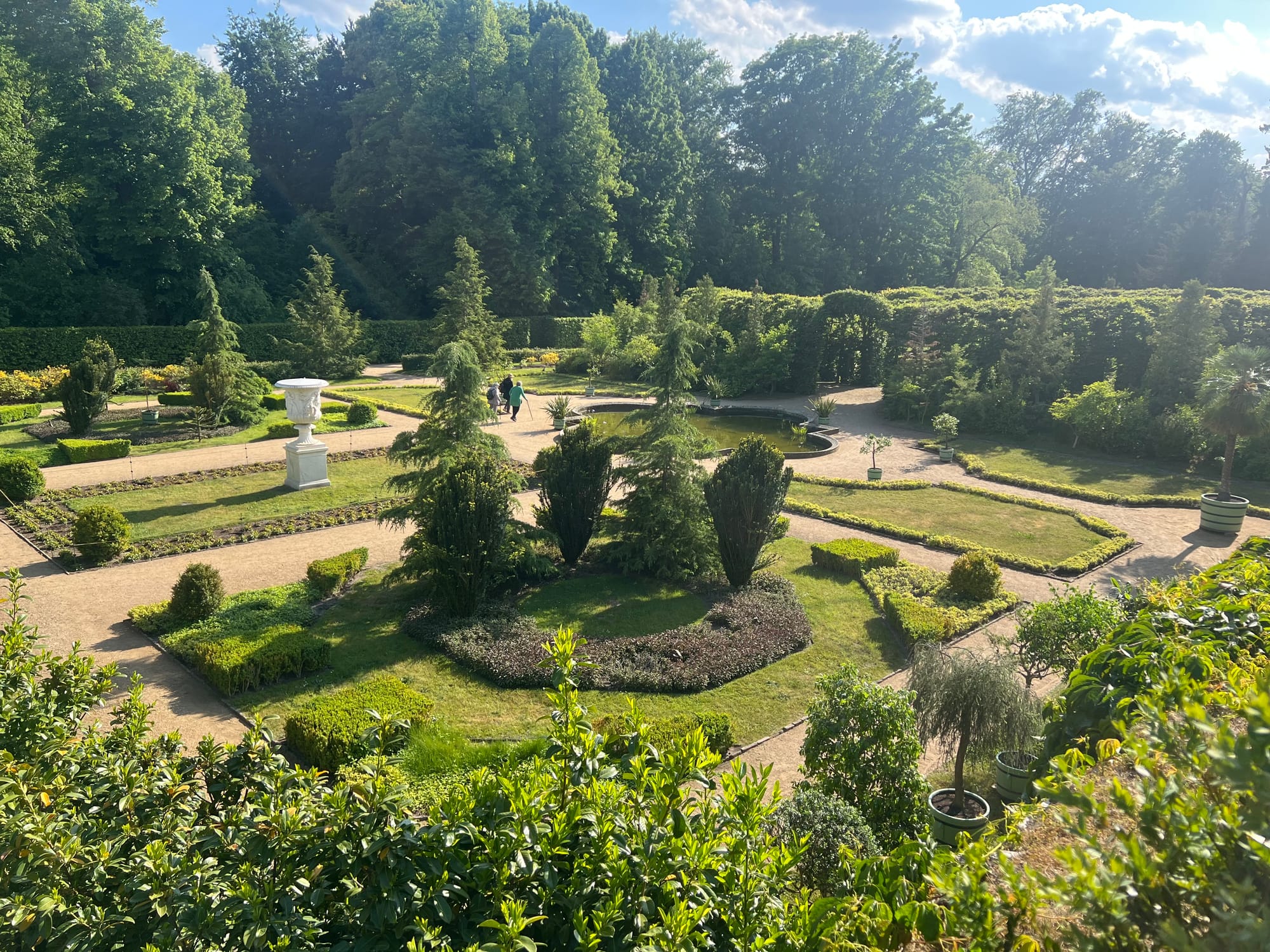
On the second day of our Berlin stay, we decided to road test the new Renault on the autobahn. It is a little strange that people so regimented would opt to be the only people on the planet who have zero speed limits on the highway. Perhaps it is their release valve! I don’t think I will ever get used to driving at 150 km/h, only to have a constant stream of bully black BMWs flashing their lights and rocketing past like we were standing still. 170 km/h was my record, but the car could have done more.
We were traversing the autobahn to visit Laurenz von Glahn, a consultant working on a large regenerative, broadacre showpiece. Laurenz had tried to help us with seminars in Germany, but to no avail. German agriculture seems a little more recalcitrant than in other EU countries. I recall a speaking engagement at the Groundswell No-Till Conference in England, some years back. Then, I was almost yelled off the stage by a large group of German no-till farmers. I had mentioned that it might be time to start preparing for the loss of glyphosate, in the face of the growing evidence of the toxicity of the herbicide. OMG! It was like I had threatened to turn off their oxygen. I was never invited back to that conference, as a result of this little stoush... It’s a shame, as I would love to present there again sometime.
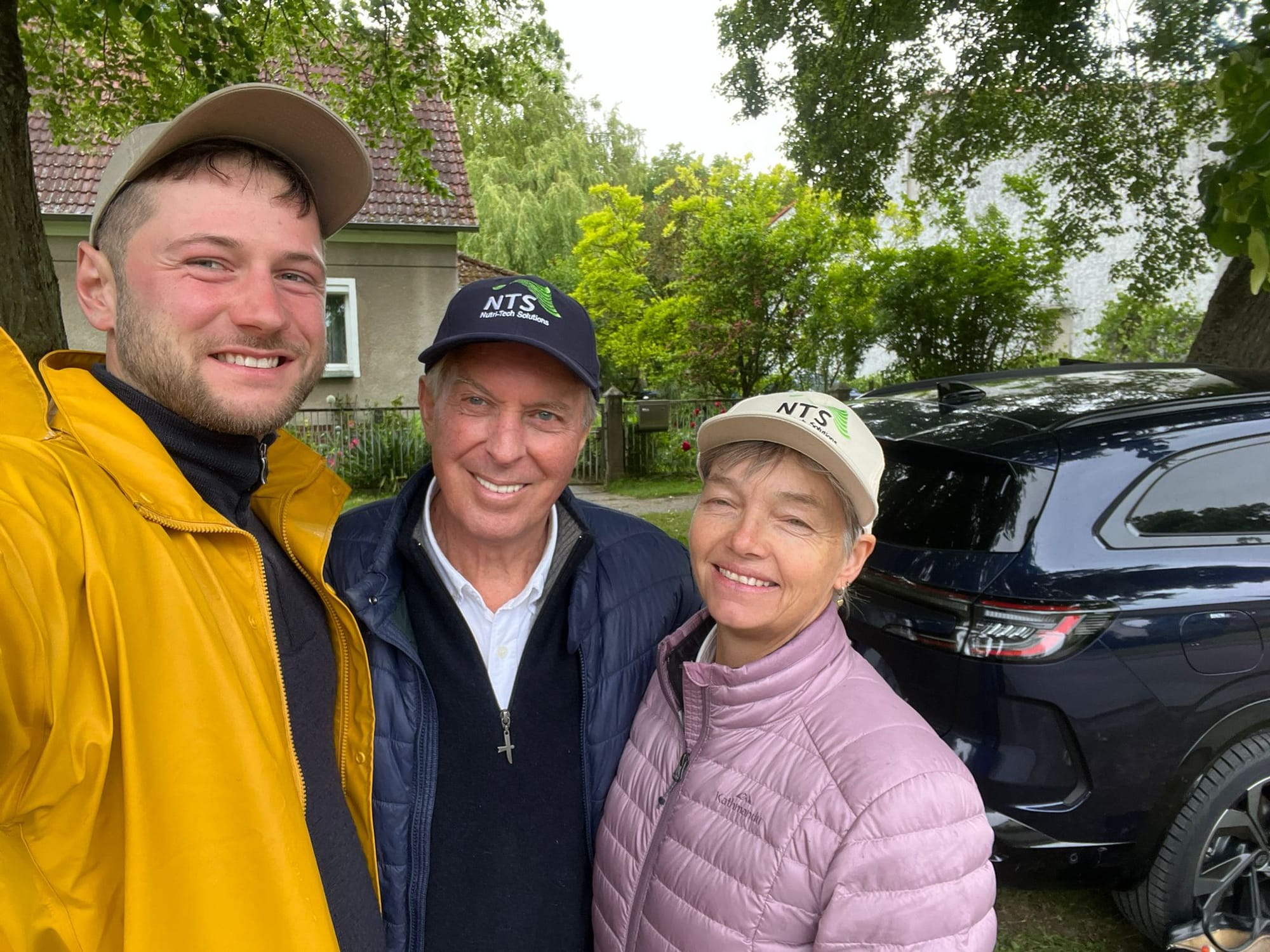
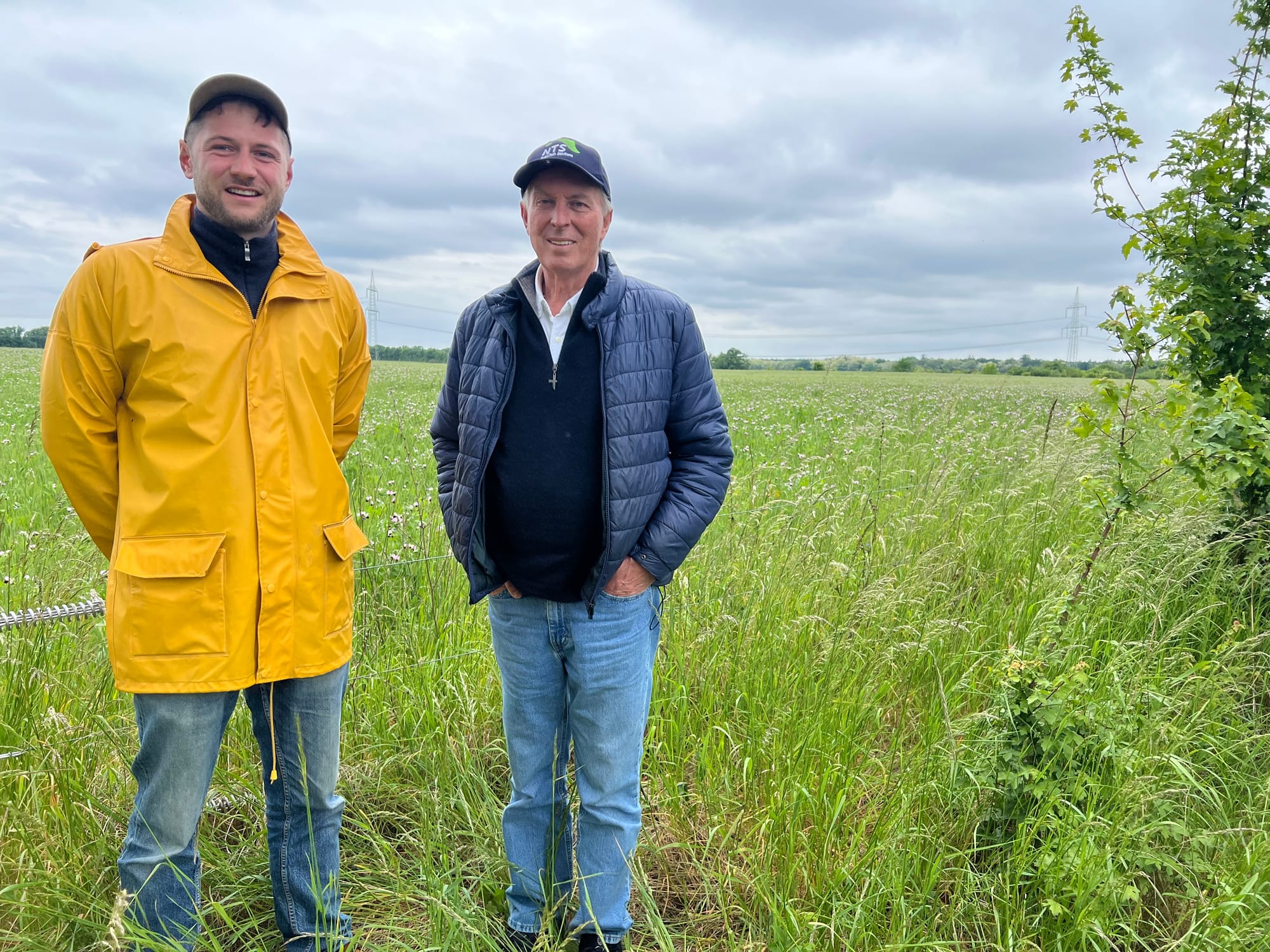
Laurenz is a talented regenerative consultant who has been given relative free rein to introduce a broad suite of regenerative strategies into this 3000-acre operation. There are paddocks of syntropic plantings where a diversity of food and fodder plants are interspersed with legumes, herbs, and other functional benefactors. I have dipped my toe into these waters a little in the past. However, planting 30 varieties of stone fruit in a scattered 2000-tree planting was not particularly practical when wages are $30 per hour in Australia. The thinners, pruners, and pickers had much greater distances between trees, and it was a silly business model for us.
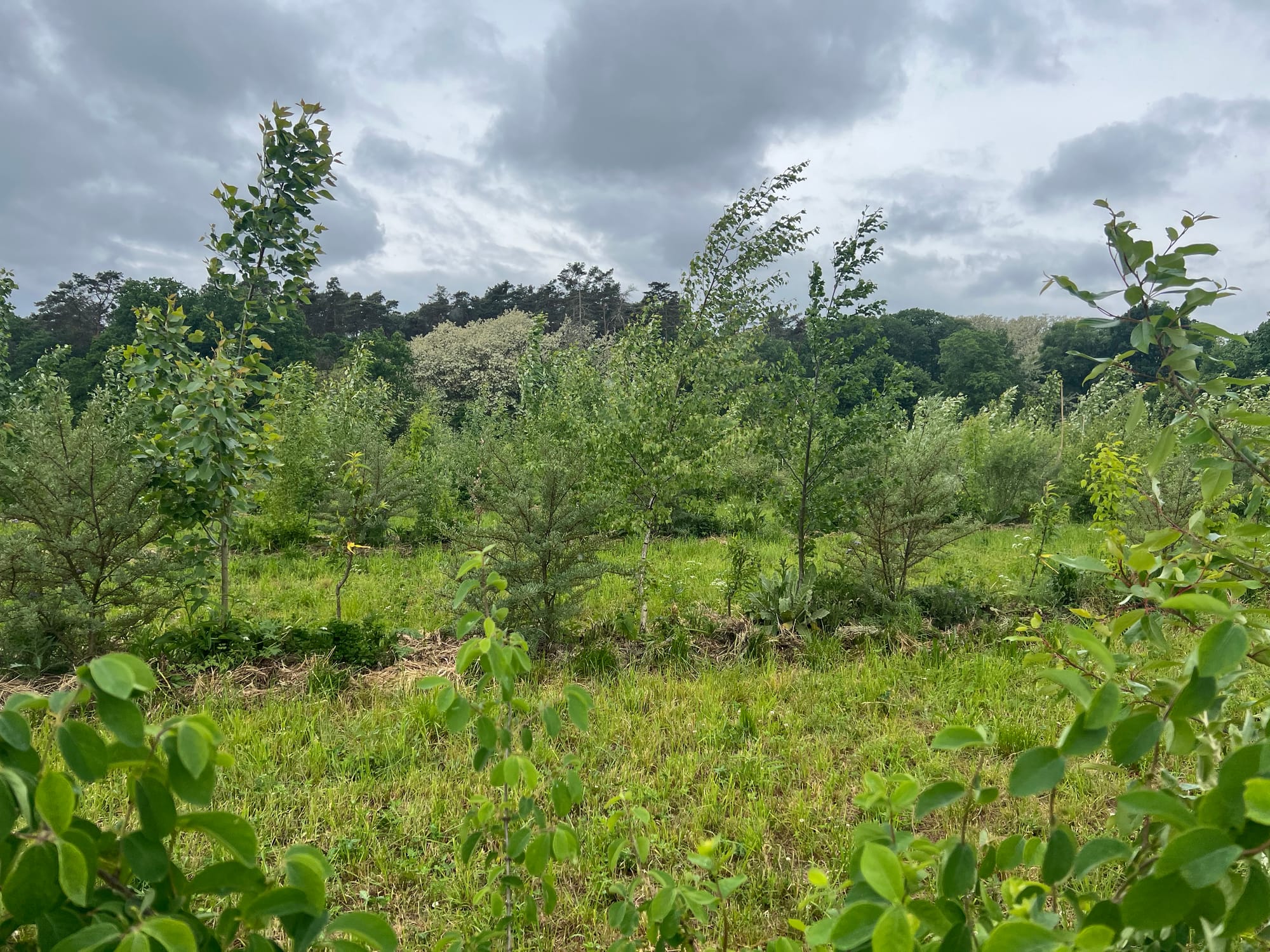
Laurenz had some great ideas to share, particularly in relation to the diverse benefits of lactobacillus tea. BAM (Beneficial Anaerobic Microbes) is our flagship example of these benefits, but simpler, less diverse DIY brews can also be productive. Laurenz has previously created DIY inocula using rice water as a starter. For those of you who are not familiar with this technique, I will elaborate.
You take a kilo of rice, place it into a two-litre jar with a lid, and fill it with water. Close the lid and shake the jar vigorously for 2 minutes, then remove the rice from the water. You can then eat the rice, as we are only interested in the rice water. Now, unscrew the lid one turn to allow CO₂ to escape, as the lactobacillus found on the rice are activated and begin to multiply. Leave the fermenting rice water to sit for a minimum of 7 days, then take that initial inoculum and add it to 18 litres of milk in a 20-litre bucket, equipped with a one-way valve sourced from a brewing shop. Leave the bucket for ten days, and then you will find a thick curd layer on top. Remove that curd and feed it to your chooks, then add the 20 litres of inoculum to a 200-litre drum with a lid attached. Plumb in two one-way valves into the lid of the drum before adding 170 litres of water and 10 litres of molasses. Close the lid and wait a further 10 days (in summer) for the brew to be complete. In this manner, you just made 200 litres of lactobacillus brew for the cost of a kilo of rice!
Laurenz has sourced some of his inoculums in this manner, but he has also utilised vermicast in the same way. Here, he extracts 20 litres of liquid vermicast from 4 kg of vermicompost and then adds that 20-litre extract into the 200-litre drum with 170 litres of water and 10 litres of molasses. In this manner, he creates 200 litres of lactobacillus brew from just 4 kg of vermicompost. Vermicompost contains a nice array of lactobacillus organisms among the diverse army of microbes that make it home. This anaerobic brewing technique selects for those lactobacilli, along with some probiotic yeasts, and multiplies them many, many times over ten days. I had never previously encountered this particular DIY approach, but it makes good sense. You never stop learning during on-farm visits.

These inocula were used as seed treatments, in-furrow stimulants, and to create a great 8-week anaerobic compost that needs no turning.
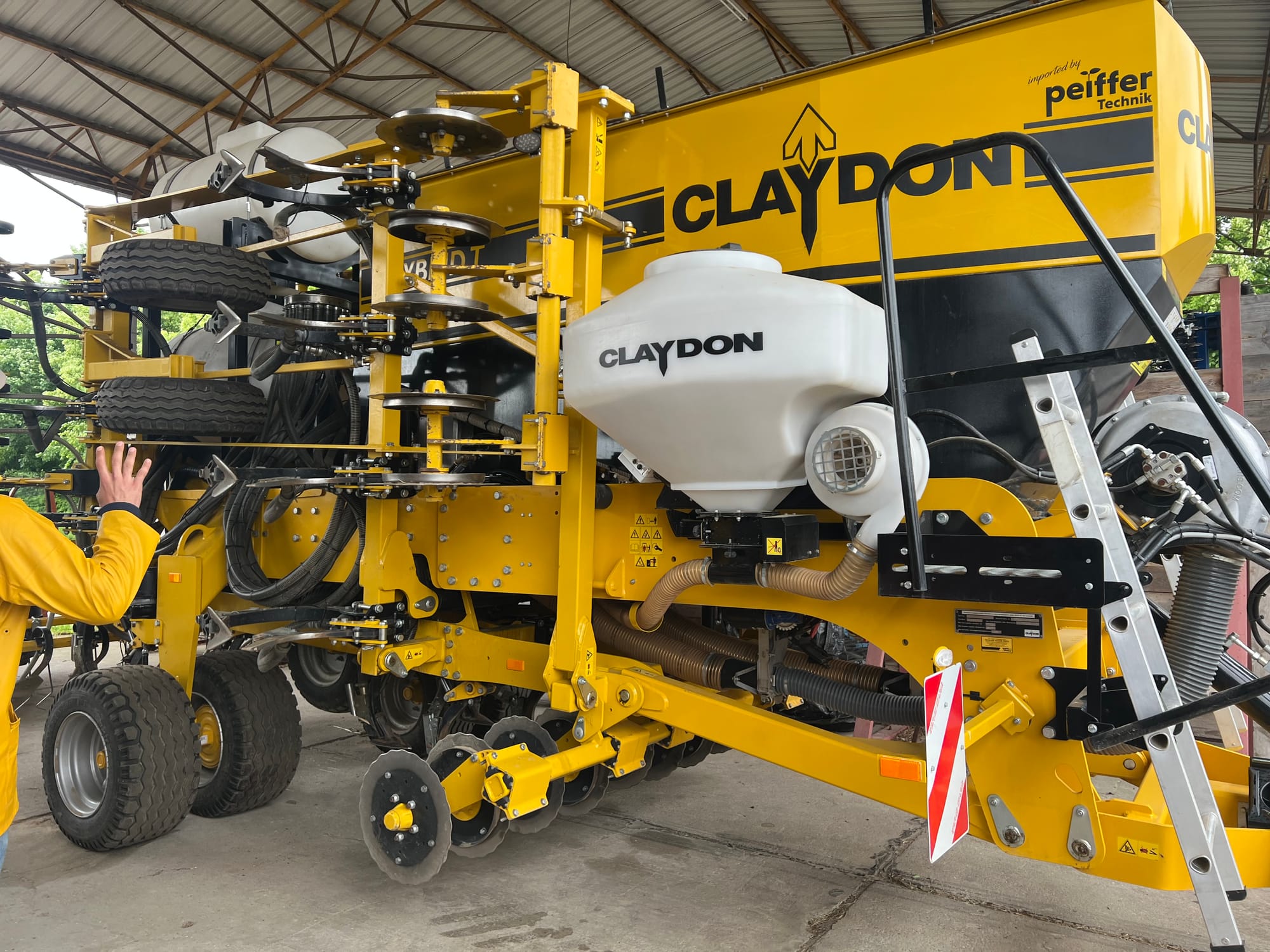
Laurenz has also been creative with other popular biological strategies. For example, he has developed a variant of Johnson/Su bioreactors that works well. Typically, growers remove the plastic tub from a 1000-litre shuttle (tote) and then line the alloy frame with landscaping fabric. This creates an enclosed, cubic-metre space in which they build their slow-cooked compost. Laurenz cuts the top off the 1000-litre shuttles but retains the plastic tub. He drills multiple 2 mm breathing holes in the base of the tub before positioning the decapitated IBC on a wooden pallet. The enclosed compost breathes from beneath and via the 4-inch breathing pipes that are inserted at the start of the process. The pipe holes remain for the 12-month composting process, so the compost is breathing beautifully from above and beneath. We have seen many Johnson/Su setups during this tour, and many of them have been open on all sides, held together with chicken wire. These units have always felt too dehydrated during the heat of summer. It makes much good sense to better retain that moisture enclosed within solid sides, while still ensuring optimum breathing.
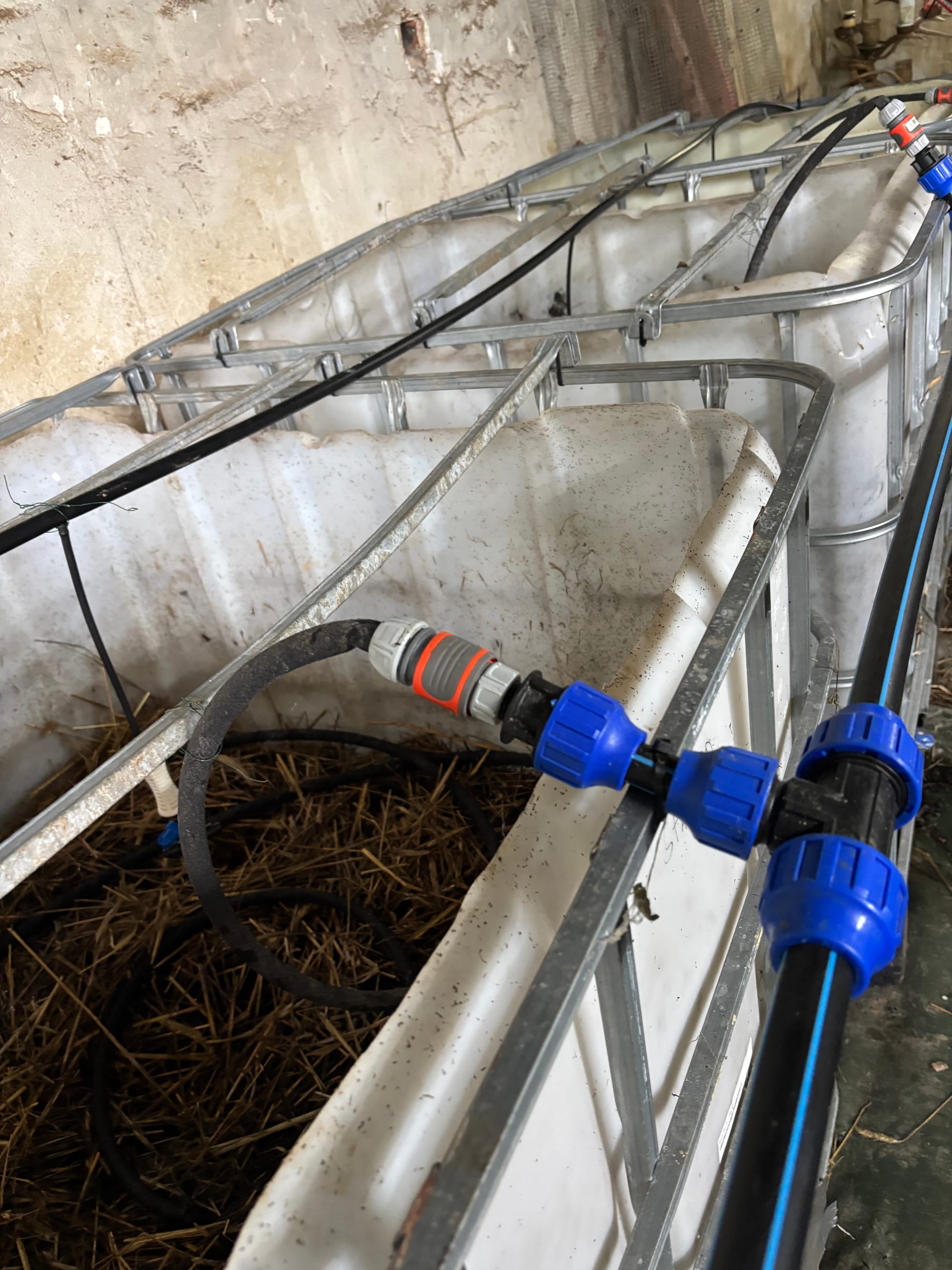
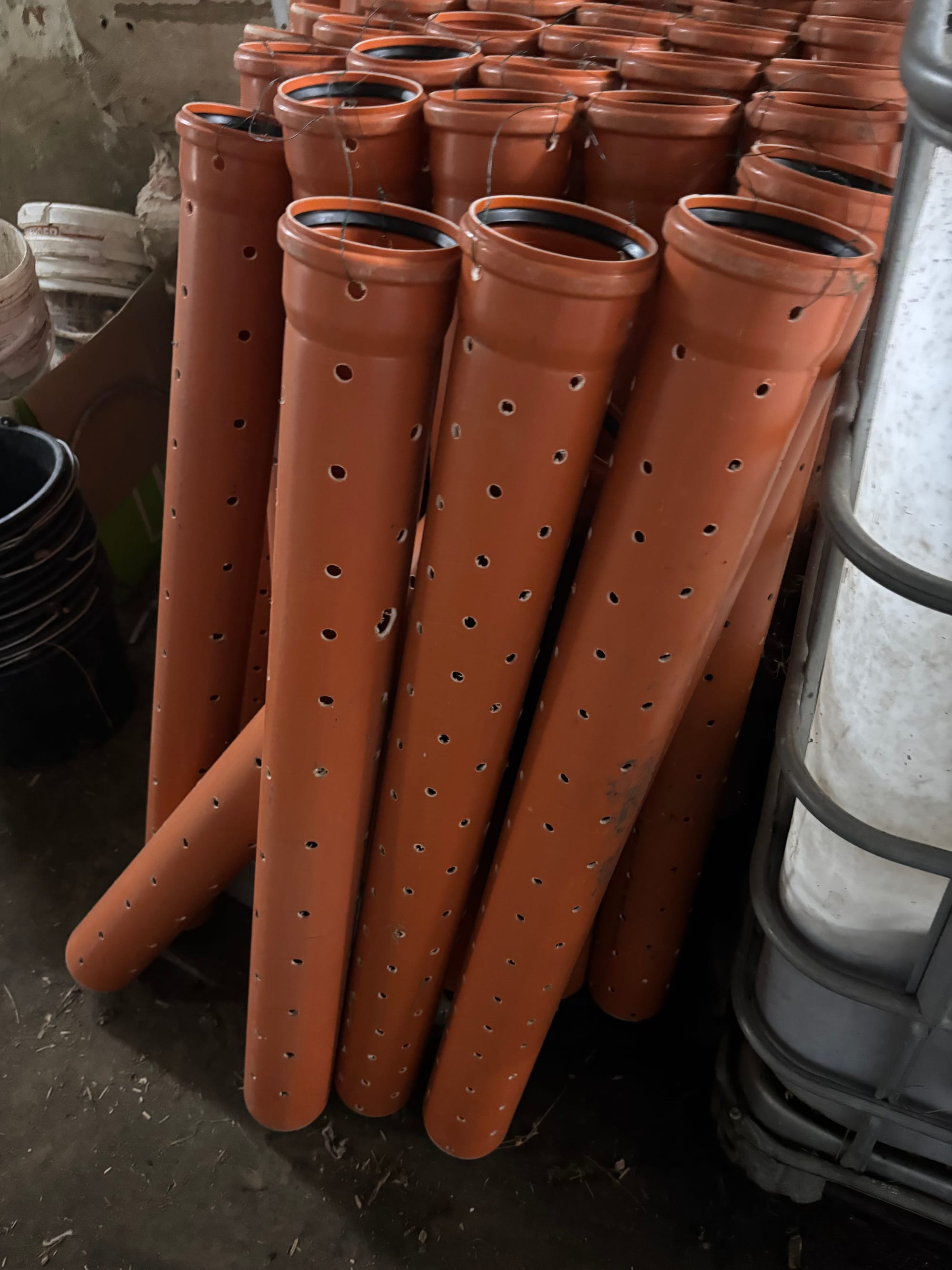
He is also experimenting with adding biodynamic herbs to the Johnson/Su and including EM. It takes a year to complete a Johnson/Su ferment, and he is eight months into these trials. I will be interested to hear the outcome. I’m expecting that the biodynamic herbs might shine.
Laurenz gains extra benefits from his DIY lactobacillus brews by using them to extract the actives from herbs like stinging nettles, horsetail, dandelion, and chamomile, all of which are common “weeds” on the property. He finds considerable benefit from this practice. Horsetail, for example, is the highest plant source of silica, and the cofactors that govern silica utilisation. If these components can be released via lactofermentation, there are obvious benefits. He includes key weeds in the brew in the hope that he can extract the weed’s essence. Weeds are often a signpost of imbalance, and the rationale here is that the biochemicals accumulated by the weed can be returned to the soil to discourage others. The hope is that if other weeds sense the presence of these biochemicals, they will be less inclined to prosper. This is essentially an amplified form of biodynamic peppering.

That’s yet another tip I will trial. Thank you, Laurenz.
Well, my friends, that wraps up part 5 of our chronicle. The next, and final, edition of our travel story will cover visits to other innovators in Germany and Austria.
Until then, wishing you all a happy, fulfilling Nutrition Farming journey.
Warm regards,
Graeme
Certificate in Nutrition Farming
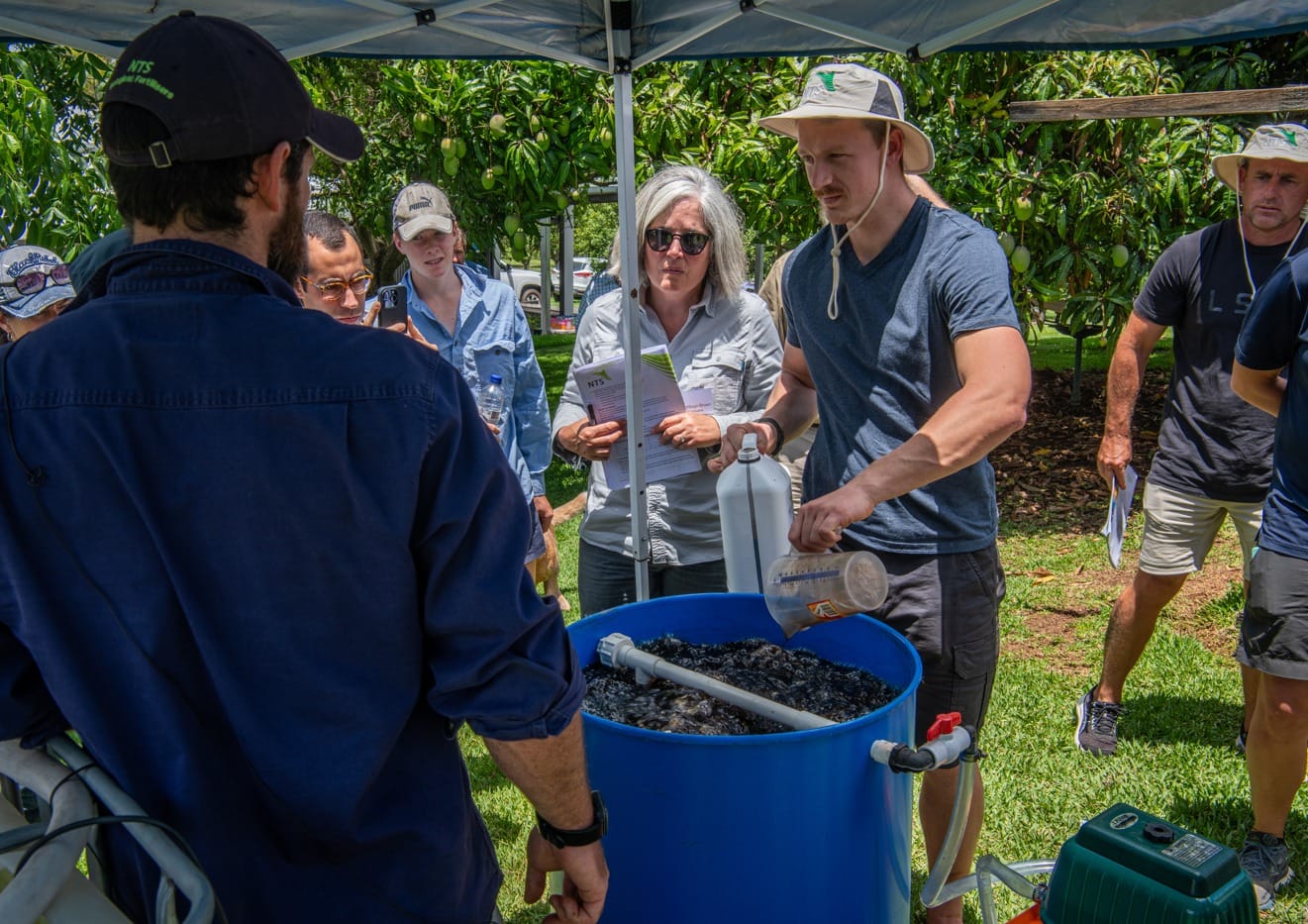
Our next iconic, five-day Certificate in Nutrition Farming® course is scheduled for July, Monday 21st - Friday 25th July 2025.
Our last course was attended by growers and consultants from six countries. It was a wonderful learning opportunity where attendees enjoyed a wealth of education and inspiration from both our presenters and their fellow attendees. We only accept 40 bookings for these courses, so please register if you would like to attend.
